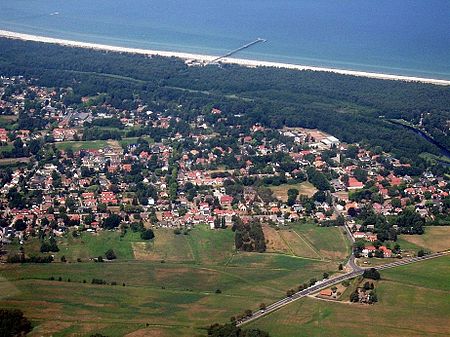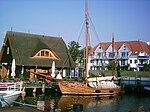Prerow

Prerow is a municipality in the district of Vorpommern-Rügen in the German state of Mecklenburg-Vorpommern. This Baltic seaside resort on the Darß peninsula is located about halfway between the historic Hanseatic towns of Rostock and Stralsund. It is one of three main settlements on the Darß, the others being the villages of Born and Wieck. Prerow has fine, sandy beaches and a picturesque landscape. It is hard to say where the forest ends and the village begins. The primeval Darß Forest has over 50 km of footpaths and cycle ways, a bridleway and tracks for horse-drawn carriages. West of the forest is West Beach with rugged terrain formed by wind and waves. South of Prerow is the bodden countryside. Visitors can take trips on a steam paddle boat and experience wildlife first-hand, nesting areas and various birds as the seasons change. The seaside resort of Prerow is located within the Western Pomerania Lagoon Area National Park which stretches from Ahrenshoop along the southern coast to the island of Hiddensee. Prerow itself was a fishing village, but has now been a seaside resort for over 130 years. Thanks to its varied climatic environment with the sea, meadows, forest and reeds, combined with good water quality, it was always recognised as a health spa. In 1998, the Minister of Social and Economic Affairs officially recognized the village as a seaside and health resort.
Excerpt from the Wikipedia article Prerow (License: CC BY-SA 3.0, Authors, Images).Prerow
Waldstraße, Darß/Fischland
Geographical coordinates (GPS) Address Nearby Places Show on map
Geographical coordinates (GPS)
| Latitude | Longitude |
|---|---|
| N 54.446944444444 ° | E 12.567777777778 ° |
Address
Waldstraße
18375 Darß/Fischland
Mecklenburg-Vorpommern, Germany
Open on Google Maps










